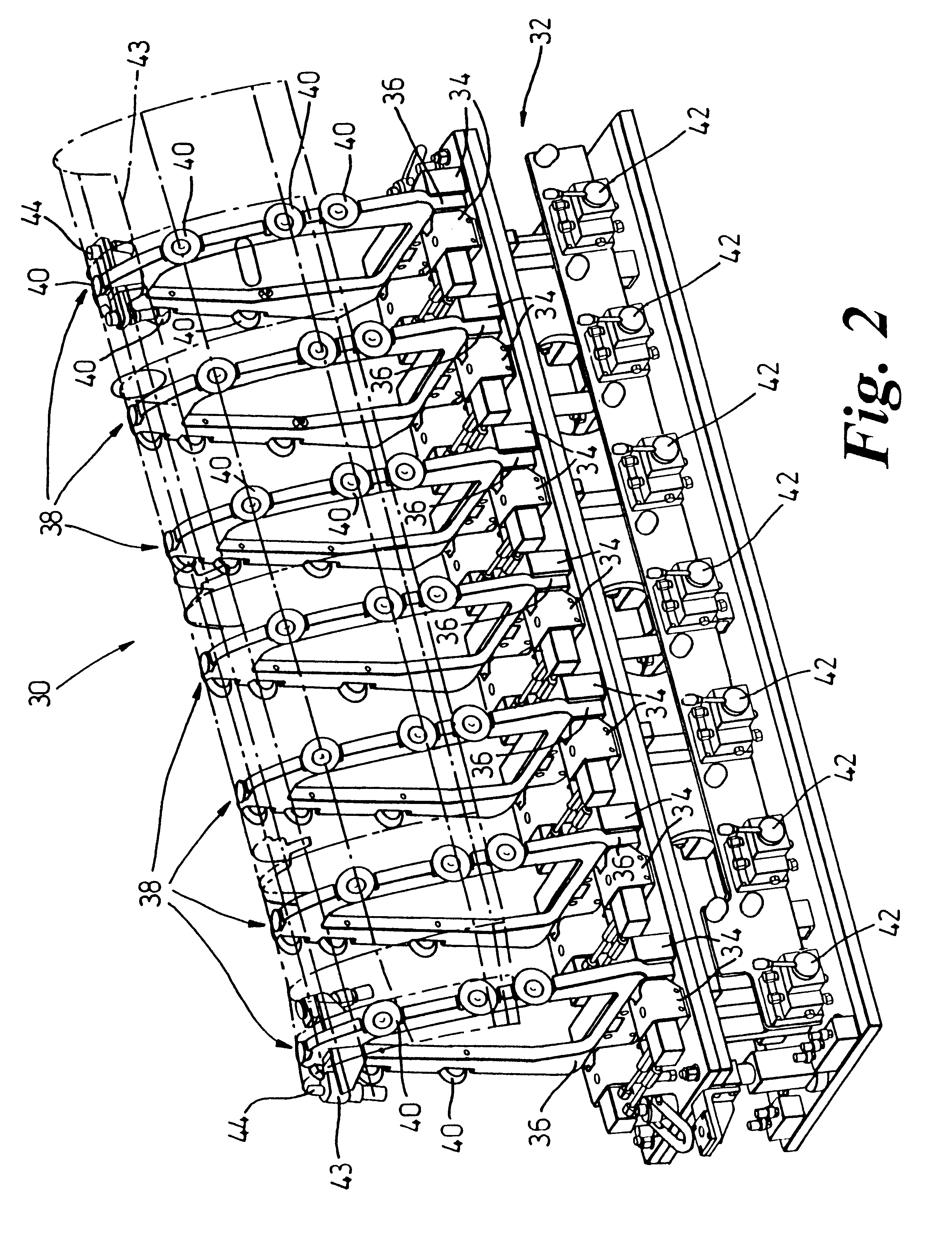Workpiece support
a technology for supporting parts and supports, applied in the direction of support parts, metal-working holders, large fixed members, etc., can solve the problems of inaccuracy of machining, large storage requirements, and large capital outlay for each fixtur
- Summary
- Abstract
- Description
- Claims
- Application Information
AI Technical Summary
Benefits of technology
Problems solved by technology
Method used
Image
Examples
Embodiment Construction
Referring to FIG. 2, the workpiece support 30 comprises a base 32 defining a number of stations, in this example seven. Each station comprises a hydraulically-operated clamp block 34 which is adapted to receive and clamp, the root 36 of a station frame element 38. The roots 36 are of a standard geometry which is reversible so that the frame element can be clamped in the clamp block 36 in either of two orientations. The remainder of the frame element is profiled in accordance with the profile of the workpiece to be supported. The system will include a library of different shaped frame elements for each of the workpieces to be supported, although some of the frame elements may be the same between different workpieces.
Each frame element includes, in this example, six suction cups 40; one at the apex of each frame element and three down each flank thereof. Suction is supplied to each of the cups 40 by suction tubes (not shown) which terminate in a standard connector (not shown) which co...
PUM
| Property | Measurement | Unit |
|---|---|---|
| Angle | aaaaa | aaaaa |
| Area | aaaaa | aaaaa |
Abstract
Description
Claims
Application Information
 Login to View More
Login to View More - R&D
- Intellectual Property
- Life Sciences
- Materials
- Tech Scout
- Unparalleled Data Quality
- Higher Quality Content
- 60% Fewer Hallucinations
Browse by: Latest US Patents, China's latest patents, Technical Efficacy Thesaurus, Application Domain, Technology Topic, Popular Technical Reports.
© 2025 PatSnap. All rights reserved.Legal|Privacy policy|Modern Slavery Act Transparency Statement|Sitemap|About US| Contact US: help@patsnap.com



